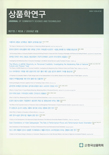- 영문명
- An Experimental Study on the Risk Management Behavior and Investor Type: in Response to Message Framing
- 발행기관
- 한국상품학회
- 저자명
- 이재은(Lee, Jaeeun)
- 간행물 정보
- 『상품학연구』제33권 제4호, 91~100쪽, 전체 10쪽
- 주제분류
- 경제경영 > 경영학
- 파일형태
- 발행일자
- 2015.08.30

국문 초록
본 연구는 Gordberg and Nitzsch (2001)의 투자자유형 분류기준(본능적/감정적/이성적)을 근거로 메시지프레이밍에 따른 투자자들의 주식투자의도와 위험관리행동을 측정하기 위해, 메시지프레이밍 유형에 따라 시장참여자들의 투자위험관리행동에 대한 차이를 가상적 투자게임을 통해 살펴보았다. 투자자들의 위험관리행동으로 주식투자종목 수, 위험투자자산 포트폴리오 중 주식투자비율, 그리고 금융거래를 이용한 주식투자부채비율을 검증하였다.
검증결과, 첫째, 주식투자종목 수에 대한 위험분산효과 측정에서 본능적 투자자집단은 긍정적 메시지프레이밍에 노출되었을 때 효과적이었으며, 감정적/이성적 투자자집단은 부정적 메시지프레이밍에서 효과적인 분산투자를 하는 것으로 나타났다. 둘째, 위험투자자산 포트폴리오 중 주식투자비율 또한 본능적 투자자집단은 긍정적 메시지프레이밍에서 높은 위험수용능력(risk tolerance)을 보였으며, 감정적/이성적 투자자집단은 부정적 메시지프레이밍에서 높은 위험수용능력을 나타냈다. 셋째, 금융거래를 이용한 주식투자부채비율에서 감정적 투자자집단의 위험수용능력은 긍정적 메시지프레이밍에 노출되었을 때 더 높은 것으로 나타난 반면 본능적/이성적 투자자집단은 부정적 메시지프레이밍에 노출되었을 때 위험수용능력이 높았다.
결과적으로 본 연구는 어떠한 사람도 위험에 대해 고정적인 태도를 가지고 있지 않으며, 그 위험에 대한 태도는 의사결정 상황에 따라 매우 달라 질 수 있음(Goldberg and Nitzsch 2001; Oehler 1998)을 인식하고, 기업의 관리자들은 위험관리에 대한 투자자들의 행동적 차이를 파악하여 투자자들에게 안정된 투자를 유도하기 위한 투자지침서를 제공해 주어야 할 것이다.
영문 초록
This study utilized MacLean's triune brain theory of evolution (1990), to empirically analyze the risk management behavior of three investor types: gut, emotional, and rational. Applying this theory, the study tried to investigate how message framing affects risk management behavior in stock investment. In this study, three kinds of risk management behavior were inspected: 1) the number of stocks they invested in; 2) investment
portfolio that is, the ration of stock shares among all investments and 3) the debt ratio of stock investment.
The results of the research is First, for the number of stocks invested in, which indicates the effect of diversification in investments, gut investors efficiently diversified their investments under positively framed messages. The emotional and rational investors, on the other hand, were affected by negative message framing. Second, for the portfolio ratio, gut investors showed higher risk tolerance under positive message framing, while emotional and rational investors showed that kind of tolerance under negatively framedmessages. Third, for the debt ratio of stock investment, the
emotional investors showed high risk tolerance when theywere exposed to positivemessage framing, while gut and rational investors did so under negatively framedmessages
목차
I. 서 론
II. 이론적 배경 및 가설설정
III. 연구방법 및 가설검증
IV. 결 론
키워드
해당간행물 수록 논문
참고문헌
최근 이용한 논문
교보eBook 첫 방문을 환영 합니다!

신규가입 혜택 지급이 완료 되었습니다.
바로 사용 가능한 교보e캐시 1,000원 (유효기간 7일)
지금 바로 교보eBook의 다양한 콘텐츠를 이용해 보세요!


